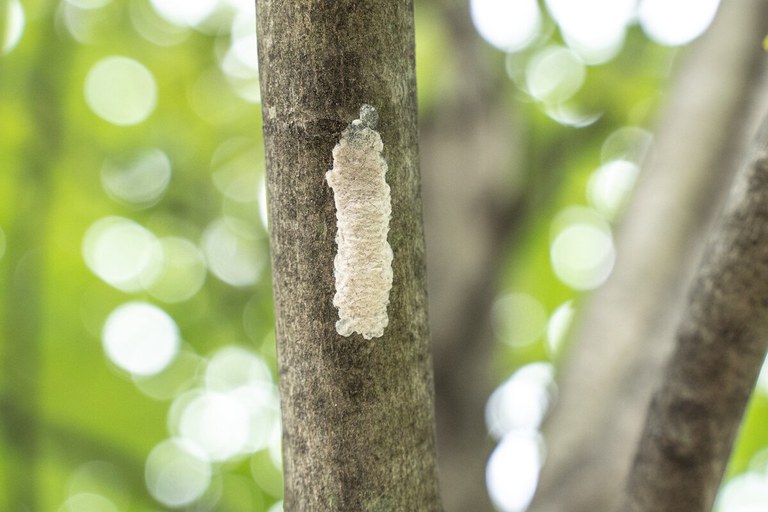Zeroing in on egg hatch timing can help control spotted lanternflies.
Problem
What can be done to minimize spotted lanternfly populations?
- The invasive, nonnative spotted lanternfly poses a significant threat to Pennsylvania agriculture, landscapes, and natural ecosystems, particularly with increasing populations of recently hatched nymphs feeding on various host plants important to the state's economy.
Findings
Researchers investigated the probability of egg hatch based on the weather conditions and temperature.
- In controlled lab studies, the team evaluated sets of 30 individual egg masses at 5 constant temperatures. During field studies, they observed 112 marked egg masses throughout May and June for the emergence of first-instar nymphs.
- Egg developmental rate increased as the constant temperature increased. The findings led to the development of an online tool to predict egg hatch based on weather conditions and location.
Impact
Predicting when spotted lanternfly eggs will hatch can help with control tactics to reduce nymphs.
- Citizens and the agricultural industry can use the tool to make decisions about timing and management strategies. Government agencies, university researchers, and extension professionals can use it for surveillance efforts.
Research Credit
Team
- Erica Smyers, Julie Urban, Andrew Dechaine, Douglas Pfeiffer, Stephen Crawford, Dennis Calvin
Participating Department
Partners
- Virginia Polytechnic Institute and State University
- Penn State Center for Environmental Informatics
Competitive Funding
- USDA Animal and Plant Health Inspection Service
- Pennsylvania Department of Agriculture
Federal and State Appropriations
- USDA NIFA Hatch Project PEN04576, Accession #1004464
Emerging Disoveries
Published Research
Spatio-Temporal Model for Predicting Spring Hatch of the Spotted Lanternfly (Hemiptera: Fulgoridae).
-
Smyers, E. C., Urban, J. M., Dechaine, A. C., Pfeiffer, D. G., Crawford, S. R., & Calvin, D. D. (2021). Spatio-Temporal Model for Predicting Spring Hatch of the Spotted Lanternfly (Hemiptera: Fulgoridae). Environmental entomology, 50(1), 126-137. https://doi.org/10.1093/ee/nvaa129
Office for Research and Graduate Education
Address
217 Agricultural Administration BuildingUniversity Park, PA 16802-2600
- Email agresearch@psu.edu
- Office 814-865-3136
Office for Research and Graduate Education
Address
217 Agricultural Administration BuildingUniversity Park, PA 16802-2600
- Email agresearch@psu.edu
- Office 814-865-3136



